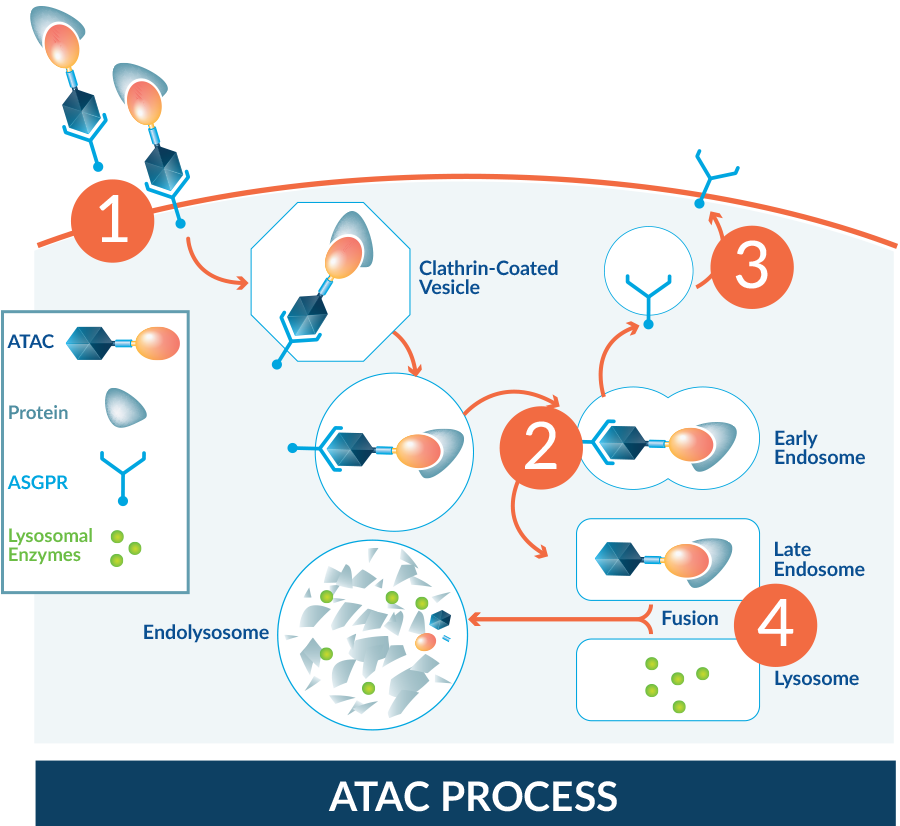ATACs – a new class of degraders harnessing ASGPR
The asialoglycoprotein receptor (ASGPR) is an endocytotic cell surface receptor that plays a key role in a natural process through which endogenous proteins are internalized and degraded in the hepatocyte endolysosome. ATACs (ASGPR Targeting Chimeras) are designed to harness this natural ASGPR degradation pathway.
ATACs are bi-functional molecules comprised of a ligand that binds to ASGPR, linked to a second ligand that binds to a disease-causing extracellular protein. ATACs work by binding to and shuttling targeted proteins from the circulation to the hepatocyte endolysosome, where the unwanted proteins are degraded.


- Proteins bind to ASGPR. Proteins to be cleared from circulation bind to ASGPR on the surface of hepatocytes.
- Proteins are internalized. Proteins and ASGPR complexes are internalized and shuttled into endosomes.
- Receptors recycle. Internalized ASGPR is recycled back to the cell surface.
- Proteins are degraded. Protein-containing endosomes fuse with lysosomes and are degraded.

- ATAC captures protein and binds to ASGPR. Proteins targeted for degradation are captured by ATACs and brought to ASGPR on the surface of hepatocytes.
- Proteins are internalized. Proteins bound to ATACS and ASGPR are internalized and shuttled into endosomes.
- Receptors recycle. Internalized ASGPR is recycled back to the cell surface.
- Proteins bound to ATAC are degraded. Endosomes containing proteins bound to ATACs fuse with lysosomes and are degraded.
Integrated discovery platform to design and build ATACs targeting diverse pathogenic proteins
We have built a bespoke, integrated, and modular drug discovery platform for the design and assembly of ATACs that target a wide array of extracellular proteins. Key components of the Avilar drug discovery platform include:

Using an X-ray structure guided approach, we discovered a library of small molecule, high affinity ASGPR ligands that offer monovalent functionality and superior properties versus historical ASGPR binders.

Our optimized small molecule ASGPR ligands and linkers are modular and can be efficiently incorporated into ATACs with different protein ligands to target a wide range of disease-causing extracellular proteins.

We developed specialized mathematical modeling tools to integrate and predict the unique biophysical, pharmacokinetic, and pharmacodynamic characteristics of ATAC-mediated endocytosis and degradation.

Our protein informatics system extensively catalogues key information about extracellular proteins and enables advanced insights for pipeline target selection, protein binder design, and ATAC development.

